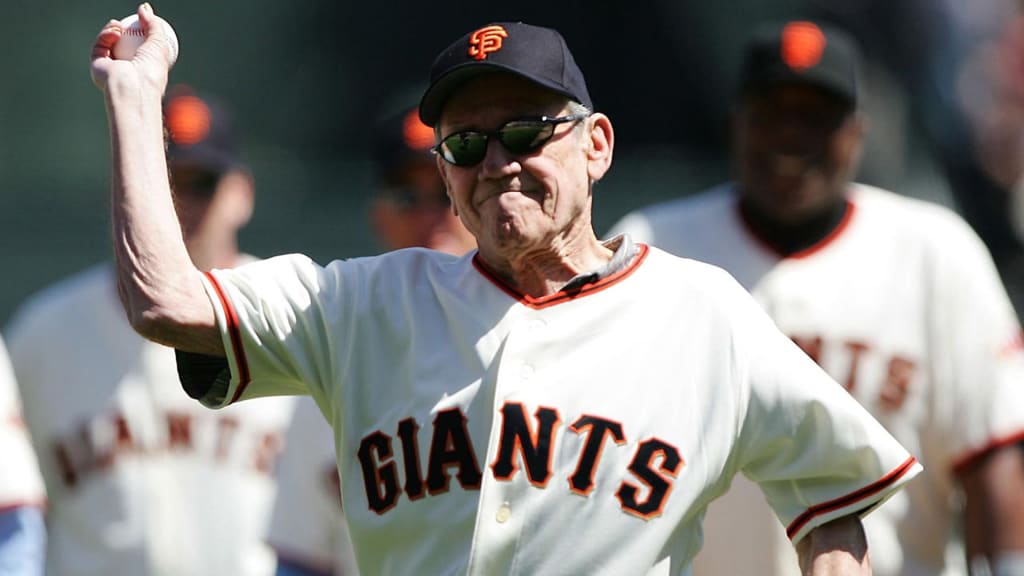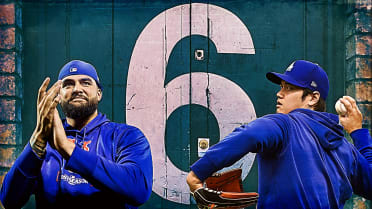Balk defined 1961 All-Star Game, Stu Miller's career

Not many days have passed since wrecking balls and other instruments of demolition struck the final blows against venerable Candlestick Park. Such a waste of money. The home of Willie Mays, Willie McCovey, Juan Marichal and other marvels eventually would have surrendered to a force greater than that of man-made destruction. Sooner or later, the winds of Candlestick Point would have brought down the place.
For the better part of 45 years, those winds were as mighty as any force in the game. More powerful, prevalent and indiscriminant than those that attack Wrigley Field, more regular than the breezes created by the swings of Mark Reynolds, Adam Dunn and Bobby Bonds. Even after an added upper deck closed in the Stick, the fickle force of nature prompted chilled and disheveled patrons to ask the same question repeatedly: 'Why was a ballpark ever built here?'
:: All-Star Game on FOX: Tuesday, Coverage begins 7 ET ::
But that's a story for another windy day.
Anyone who witnessed firsthand the impact of the Candlestick gusts probably has a baseball tale to tell. One of the best involves the cap of former Cubs' pitcher Ed Lynch. Not only was it blown off his head, but it reached the outfield fence -- and was pinned against it -- without touching the ground. Lynch characterized the flight of his cap as "a frozen rope."
But another gusty episode at the Stick trumps all others. Fifty-four years ago today, a Candlestick blast rocked pitcher Stu Miller and prompted a scoring decision that affected an All-Star Game.
The incident is famous and oft-chronicled, though not necessarily well-chronicled. Miller, pitching in his home park on July 11, was not blown off the mound at the Stick in the ninth inning of the first All-Star Game of 1961. (Yes, baseball doubled its ASG pleasure each year, from 1959 to '62.) Instead, a gust of wind merely compromised his balance. Regardless, Miller threw a pitch, one that produced a swing and miss by Rocky Colavito.
The episode has been overstated in print, on the air and in bullpen yarns since it occurred, making for intriguing fiction for decades. Miller took the truth to his grave earlier this year, but he had provided accurate retrospect eight years earlier in a report by the Associated Press.
"Just as I was ready to pitch, an extra gust of wind came along, and I waved like a tree," he said. "My whole body went back and forth about two or three inches. The AL bench hollered 'balk.' And I knew it was a balk. But the umpires didn't call it at first. I went ahead and threw the pitch, and Colavito swung and missed. Then the umpire took off his mask and motioned the runners to second and third."
One of them scored on an error by third baseman Ken Boyer -- the run was charged to reliever Sandy Koufax -- to tie the score. Miller replaced Koufax and surrendered another unearned run in the 10th inning. But Mays doubled in Henry Aaron and scored another run on a single by Roberto Clemente in the 10th, and the National League won, 5-4.
Miller emerged as the winning pitcher.
So many legendary figures participated in the game. Sandy Koufax, Mays, Aaron and Clemente were merely four of the 21 future Hall of Famers present. Mickey Mantle, Stan Musial, Warren Spahn, Frank Robinson, Whitey Ford, Yogi Berra, Eddie Mathews, Al Kaline, Orlando Cepeda, Brooks Robinson, Nellie Fox, Jim Bunning, Hoyt Wilhelm and Harmon Killebrew also played. Luis Aparicio, Don Drysdale and Ernie Banks were wallflowers.
"And to make the day complete," the late Don Zimmer used to say, "I was there. . . in case we played 33 innings."
Yet, with all those more celebrated players -- and Zim --- involved, Miller and the balk remain the focal points of that All-Star afternoon.
"The next day in the paper, there was a banner headline: 'Miller Blown off Mound,'" Miller told the AP. "They couldn't have made it any bigger. They made it out to be like I was pinned against the center-field fence. It wasn't about Mays scores winning run, but 'Miller Blown off Mound.'"
* * * *
Miller died at age 87 at his home in Cameron Park, Calif. Jan. 4. He left a legacy of his having been a three-speed pitcher to go along with the inaccurate image of his being carried aloft or at least being knocked off his feet. That image obscures what he was, a pretty formidable pitcher who threw four shutouts and 14 complete games in his first 29 big league starts with the Cardinals in 1952 and '53.
He made 52 more starts, none after 1960, and became an effective reliever with his three-pitch repertoire described thusly -- "slow, slower and slowest."
He moved from the Cardinals to the Phillies in 1956, to the New York Giants in '57 and with the Giants to San Francisco in '58, where he played through '62. He led the league in saves in '61 and after being traded to the Orioles, led the American League in appearances (71) and saves (27) in '63 as the O's began to emerge from the Yankees' shadow. Miller saved 70 games in the next four seasons.
He had been the Giants' final reliever in two games against the Yankees in the 1962 World Series, but didn't appear for the Orioles' in their World Series sweep of the Dodgers four years later. The O's used only 17 players, four of them pitchers, in the four games.
Moe Drabosky, Eddie Watt and Miller shared the Orioles closer's role in 1967, and Miller was sold to the Braves the following April. He retired after three weeks.
With all he had accomplished -- he also surrendered Mantle's 500th home run, the Candlestick balk stands as the defining moment in Miller's career. "I guess that's better than 'Stu Who?'" he told the AP. "I'd rather be remembered for something."
Marty Noble is a columnist for MLB.com.



